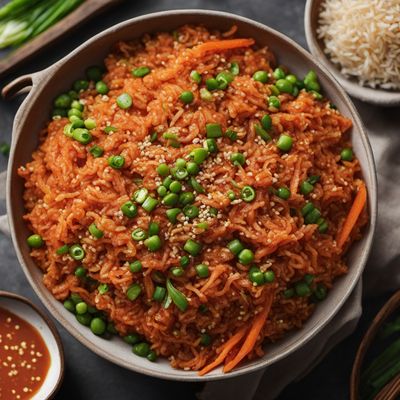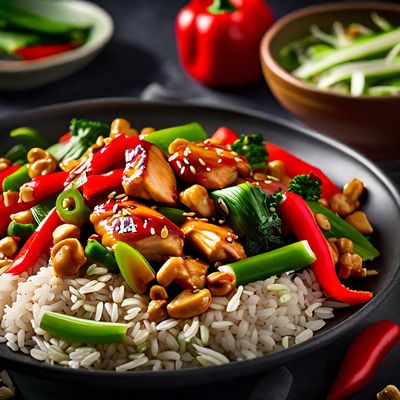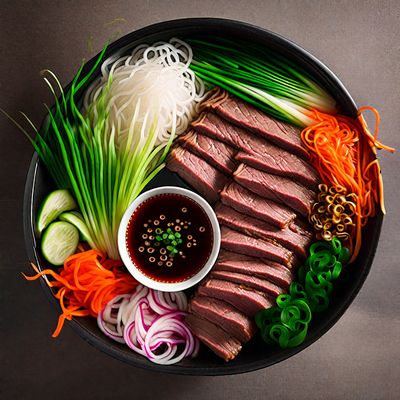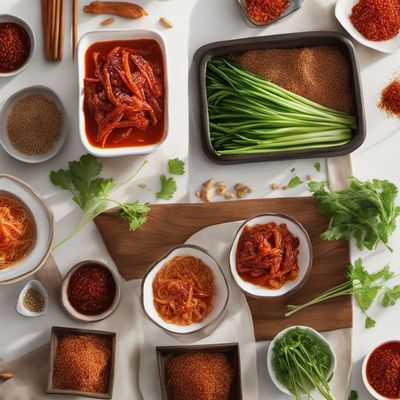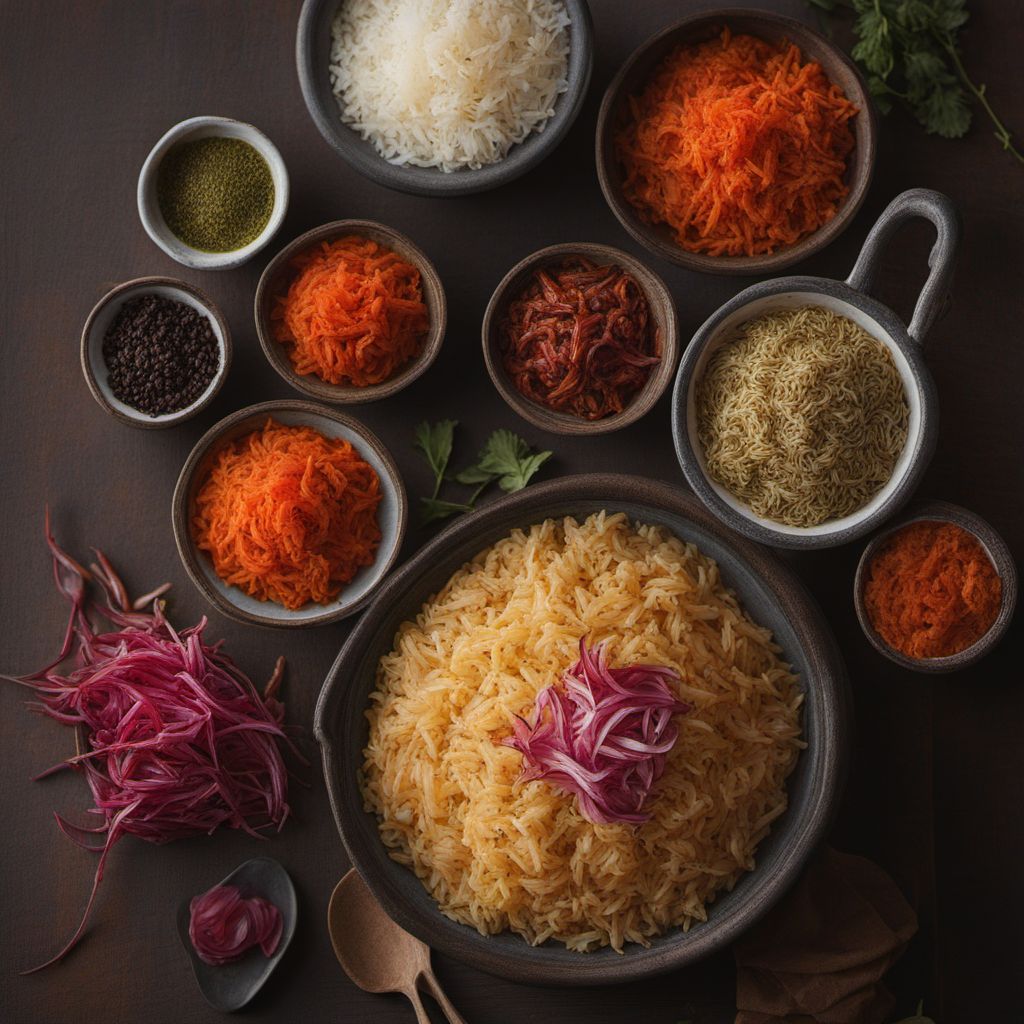
Recipe
Djiboutian Spiced Rice with Fermented Vegetables
Savory Djiboutian Rice Delight with Tangy Fermented Vegetables
4.5 out of 5
This recipe combines the vibrant flavors of Djiboutian cuisine with the traditional Korean dish, kimchi bokkeumbap. Djiboutian Spiced Rice with Fermented Vegetables is a delightful fusion that brings together aromatic spices and tangy fermented vegetables, resulting in a unique and flavorful rice dish.
Metadata
Preparation time
15 minutes
Cooking time
10 minutes
Total time
25 minutes
Yields
4 servings
Preparation difficulty
Easy
Suitable for
Vegetarian, Vegan, Gluten-free, Dairy-free, Nut-free
Allergens
N/A
Not suitable for
Paleo, Keto, Low-carb, High-protein, Low-fat
Ingredients
In this adaptation, we have replaced the traditional Korean kimchi with Djiboutian-style fermented vegetables. The spices used in the dish have also been adjusted to align with the flavor profiles of Djiboutian cuisine. Additionally, the cooking techniques have been modified to incorporate Djiboutian culinary traditions. We alse have the original recipe for Kimchi bokkeumbap, so you can check it out.
-
2 cups (400g) cooked rice 2 cups (400g) cooked rice
-
1 cup (150g) Djiboutian-style fermented vegetables 1 cup (150g) Djiboutian-style fermented vegetables
-
1 tablespoon vegetable oil 1 tablespoon vegetable oil
-
1 onion, diced 1 onion, diced
-
2 cloves garlic, minced 2 cloves garlic, minced
-
1 teaspoon ground cumin 1 teaspoon ground cumin
-
1 teaspoon ground coriander 1 teaspoon ground coriander
-
1/2 teaspoon ground turmeric 1/2 teaspoon ground turmeric
-
Salt, to taste Salt, to taste
-
Fresh herbs (such as cilantro or parsley), for garnish Fresh herbs (such as cilantro or parsley), for garnish
Nutrition
- Calories (kcal / KJ): 250 kcal / 1046 KJ
- Fat (total, saturated): 5g, 0.5g
- Carbohydrates (total, sugars): 45g, 2g
- Protein: 5g
- Fiber: 3g
- Salt: 1g
Preparation
-
1.Heat the vegetable oil in a large pan or wok over medium heat.
-
2.Add the diced onion and minced garlic to the pan and sauté until the onion becomes translucent.
-
3.Add the ground cumin, ground coriander, and ground turmeric to the pan. Stir well to coat the onions and garlic with the spices.
-
4.Add the cooked rice to the pan and stir-fry for a few minutes, ensuring that the rice is well-coated with the spices.
-
5.Add the Djiboutian-style fermented vegetables to the pan and continue stir-frying for another 2-3 minutes, allowing the flavors to meld together.
-
6.Season with salt to taste.
-
7.Remove from heat and garnish with fresh herbs.
-
8.Serve hot and enjoy!
Treat your ingredients with care...
- Djiboutian-style fermented vegetables — If you can't find Djiboutian-style fermented vegetables, you can substitute with any other tangy and spicy fermented vegetables, such as sauerkraut or kimchi.
Tips & Tricks
- To enhance the flavors, you can add a dash of Djiboutian spice blend, known as "hawaj," to the dish.
- For a spicier version, you can add a small amount of Djiboutian chili paste, called "pili pili," to the stir-fry.
- Feel free to customize the dish by adding your favorite vegetables or protein, such as diced bell peppers or cooked chicken.
Serving advice
Serve the Djiboutian Spiced Rice with Fermented Vegetables as a main course, accompanied by a fresh salad or Djiboutian flatbread.
Presentation advice
Garnish the dish with a sprinkle of fresh herbs and serve it in a vibrant Djiboutian-inspired bowl or plate to enhance its visual appeal.
More recipes...
More Korean cuisine dishes » Browse all

Janchi guksu
Banquet Noodles
Janchi guksu is a Korean noodle dish made with thin wheat noodles in a clear broth.

Hoe naengmyeon
Hoe Naengmyeon
Hoe naengmyeon is a Korean cold noodle dish that is perfect for hot summer days. The dish is made with thin, chewy noodles made from buckwheat and...

Garibi gui
Grilled Mackerel
Garibi gui is a traditional dish from the West African country of Senegal. It is a spicy fish stew made with tomatoes, onions, and a variety of spices.
